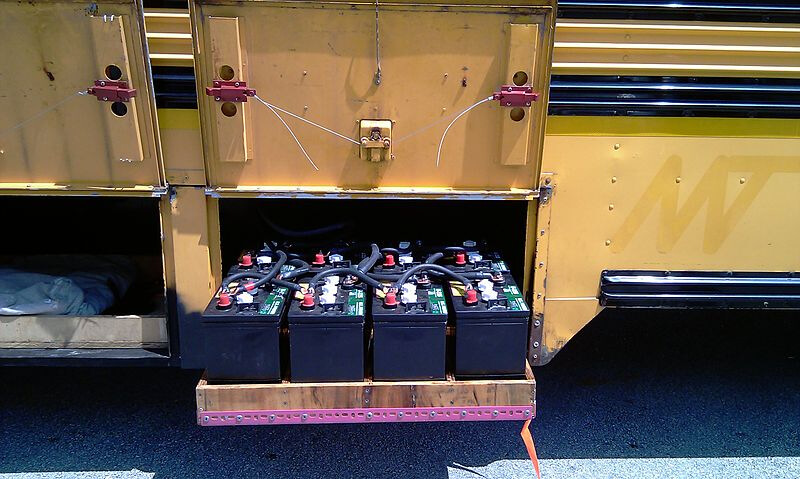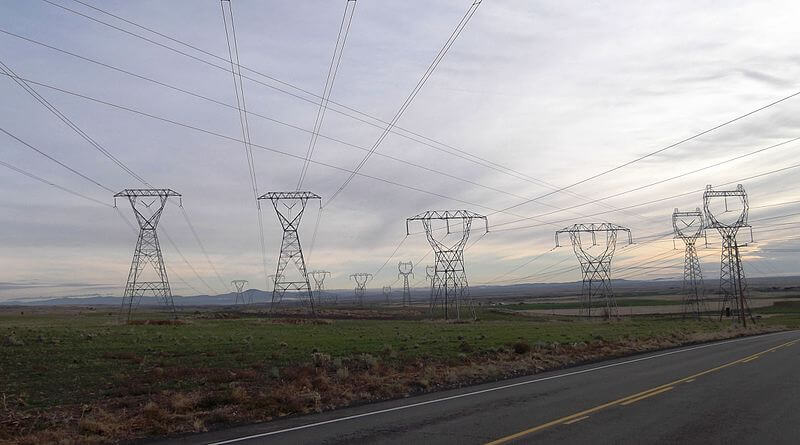Alongside the type of solar panels you buy, their placement and direction is equally important. The panels can absorb the maximum energy when the sun’s rays hit them perpendicularly. You can ensure that the solar panels generate a sufficient amount of power when they face the right direction and have the correct tilt so that they receive maximum sunlight for a long period of time.
Energy production significantly increases in a few cases with the help of solar tracking systems that guide the solar arrays to follow the sun. In this article, we will discuss some important topics related to the direction of solar panels, the angle of their tilt, and so on. We hope that after reading it you will be able to reconfigure your solar panels to maximize energy production.
What Direction Should I Point My Solar Panels?
The direction that your solar panels face depends entirely on your geographic location; that is, whether you live in the northern or southern hemisphere of this world. The general rule of thumb when it comes to setting up solar panels for those living in the northern hemisphere is that the panels must face true south and in the southern hemisphere, they must face true north. These directions are ideal because the solar panels can receive direct sunlight throughout the day only in this manner.
You must, however, know the difference between magnetic south and true south to avoid any confusion. Magnetic south is the direction that the compass points towards and that is the Earth’s south magnetic pole. Whereas, the solar panels need to face the solar or geographic south, which is the direction of the South Pole. The same is the case with magnetic north and true north.
The direction might vary as per the usage of the solar panels. In certain cases, it might be beneficial to slightly rotate the panels away from the south direction and more towards the south-west. While directly facing the south might help the panels collect more energy, rotating it away might help in generating maximum power when it is required. If you use your solar-powered appliances more frequently in the evening, for example, and if the panels face the setting sun, they can produce more energy for this time of the day.
It becomes ideal to make the panels face east when solar collectors are being used to heat and light up your home. Sunlight is needed the most if you wish to warm the house for the day.
Can Solar Panels Face East Or West?
Ideally, solar panels generate maximum energy when they are south facing as compared to any other direction. However, the solar panels on your terrace may face the east or west direction. These panels produce 15% less energy on average when compared to south-facing solar panels. Even if the efficiency of the solar panels is lower when they are west or south-west facing, they will be more economical as the time-of-use billing will be less.
The time-of-use billing is at its peak during the afternoon and for those households that do not require power throughout the day, west-facing solar panels are perfect. This way you can have solar panels installed on the rooftop and still save a lot of money.
East-facing solar panels are not that uncommon either, even though they generate only 80% of energy. However, it is crucial to have net-metering for east-facing solar setups. This means that you are charged with the electricity bills as per your net electricity usage and this will help you save money.
Why Should Solar Panels Face North?
Solar panels should face north when they have been placed anywhere in the southern hemisphere which includes places like Australia, South America, or some Asian islands. It will receive maximum sunlight when facing north and this will culminate in a lot of energy production for all the appliances in your household. However, north-facing solar panels are ideal only when there are no obstructions on the northern side like buildings or trees.
North-facing solar panels tend to be best suited for people or families that stay home throughout the day. Since they are home for so long, the use of appliances like pool filters, washing machines, clothes dryers, etc. is also more. Solar panels facing the north direction yield more energy and hence, they are ideal for such households. In many cases, it is possible to have the panels face different directions.
While some might face north, others can face west so that the effect is somewhat like that of the north-west facing panels. This generates the least energy in the morning and the maximum energy in the middle of the day and the afternoon. This is a good thing if you wish to save money on your electricity bills.
What Is Solar Panel Tilt Angle?
The solar panel tilt angle is yet another important factor that needs to be considered before you buy solar panels for your rooftop. You must have adequate knowledge about this to be able to assist the solar panels to generate the maximum energy for your home. The tilt or verticle angle of the solar panels. should directly face the sun for ideal absorption of sunlight
You must angle your solar panels depending on the latitudes of your location to produce maximum energy. For example, if the latitude of a particular place is 50 degrees then the optimal tilt angle should also be 50 degrees. The closer the solar panel gets to the equator, the more vertical it must be.
They must tilt towards the equator if they are closer to the poles.. Certain climatic and environmental factors also influence the tilt angle of the solar panels. In places prone to heavy snowfall, the sun’s rays can be easily obstructed or even blocked with low tilted solar panels not getting much light. This leads to a great deal of energy loss in places like Canada and the like. Places prone to dirt and debris can also have a bad effect on low-tilted solar panels.
What Is The Correct Angle For Solar Panels?
The sole purpose of the correct tilt angle for solar panels is to maximize the production of energy so that all the appliances in your home can depend on solar energy. It can be quite tricky to figure out what is the correct angle for solar panels because of the changing position of the sun throughout the day. In an ideal situation, you would be able to change the tilt-angle of the solar panels to suit the direction of the sunlight but that might not always be possible. Therefore, you must place it at an optimal angle.
A steep angle of 60 degrees tilt is considered to be the best option to get the most out of your solar panels. During the springtime, the best tilt-angle is 45 degrees and once summer comes, you might want to have a low-tilt angle for the solar panels; preferably 20 degrees.
How Do You Determine The Best Angle For Solar Panels?
You must know how to calculate the correct angle for solar panels and articles like this one can provide helpful guidelines on how to do the same. Solar panel angle calculators are beneficial in these cases, but you can also do the calculations on your own. Calculating the tilt angle during summers is quite different than calculating this angle during the winters. Two main methods are used for such calculations.
One way of calculating the correct angle for solar panels is by subtracting 15 degrees from the latitude of the solar system. This is for summer days. You must add 15 degrees to the latitude for the winter days. This method has been criticized for not being very reliable. The second method for doing this calculation is by multiplying 0.9 to the latitude of the place and then subtract 23.5 degrees from the result.
This calculation is once again for the summer season. For the winter season, repeat all the steps and then add 29 degrees to the result.
What Are The Other Factors That Affect Solar Panel Angle?
There are a few other factors that affect the solar panel tilt-angle that you must take into consideration before purchasing a solar system.
- Design Of The Roof:
Most people decide to invest in solar panels and install them on the roof because they guarantee an enhanced exposure to the sun without any obstruction. Most roofs have an inclination of 30 to 40 degrees which ensures that the panels get maximum exposure to sunlight. However, in many cases, if the inclination is bigger, it becomes difficult to achieve the ideal angle for the panels.
In certain other cases, the optimal angle might be lower than the roof angle. The best thing to do in this case is to install the panels flat on the roof. You might also get a low-angle roof made but that will require a lot of money as well as time. A racking system can be built to hold the solar panels the right way when the roof has a small inclination. Racking systems are mandatory for flat roofs.
Only by following these specific instructions and guidelines, you can achieve the correct tilt-angle and direction for the solar panels.
- Solar Panels Direction:
We have already spoken a great deal about the direction of solar panels. This is the most crucial aspect of setting up a solar system since many other factors such as the tilt-angle, the power output, the durability of the panels will all depend on it.
Frequently Asked Questions
- Can solar panels face different directions?
Yes, solar panels can face different directions if they cannot face the ideal direction, that is the true north for the southern hemisphere and the true south for the northern hemisphere. You can make the solar panels face both north and west directions if needed. You can even have the solar panels face more than two directions if required.
- How does the angle of a solar panel affect the output?
The angle of a solar panel can greatly affect the output that it yields. Based on the position of the sun and your geographical location, adjust the tilt angle of the panel. The corrector the ideal angle will help produce maximum energy.
- Can solar panels be laid flat?
Solar panels can work quite well on flat roofs as well. Most commercial buildings have flat roofs and can accommodate the flat roof solar systems quite well. You can use them in domestic buildings as well.
- What is the solar hour angle?
The solar hour angle is the angle of the sun in relation to the solar panels at a particular hour. For example, at 11.30 am local apparent time, the hour angle is -22.5 degrees.
Conclusion
A large section of the population is gradually shifting to solar energy not only to save the environment but also some money. For first-time buyers, understanding the workings and various aspects of a solar system can be quite challenging. Hence, we have gathered important information on the two most basic components of solar panels- their angle and direction. Hope the article is useful!
- 300 Watt Solar Panel Prices in India: 2023 - March 8, 2023
- 500 Watt Solar Panel Prices in India: 2023 - March 5, 2023
- Loom Solar Panel Price: 2023 - February 19, 2023



